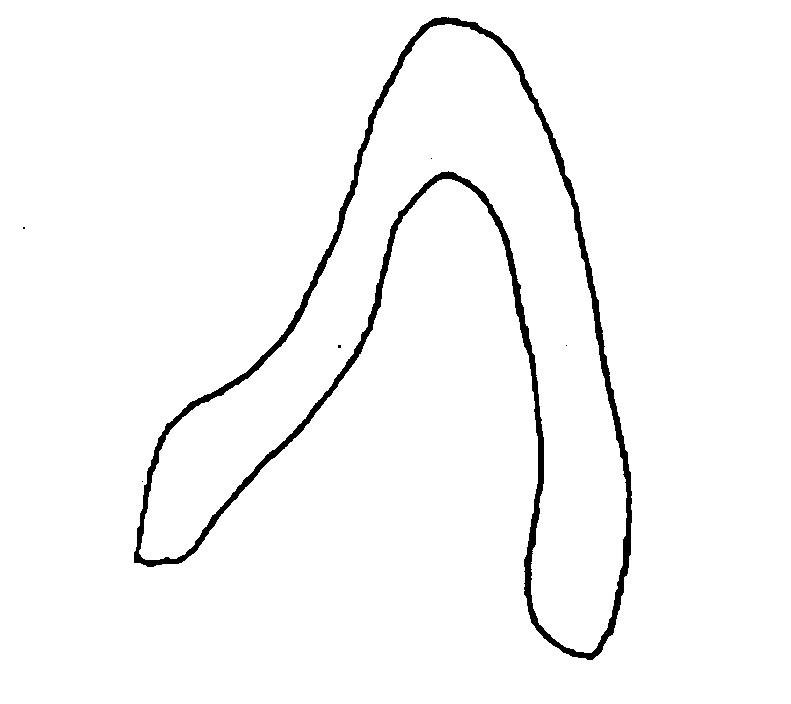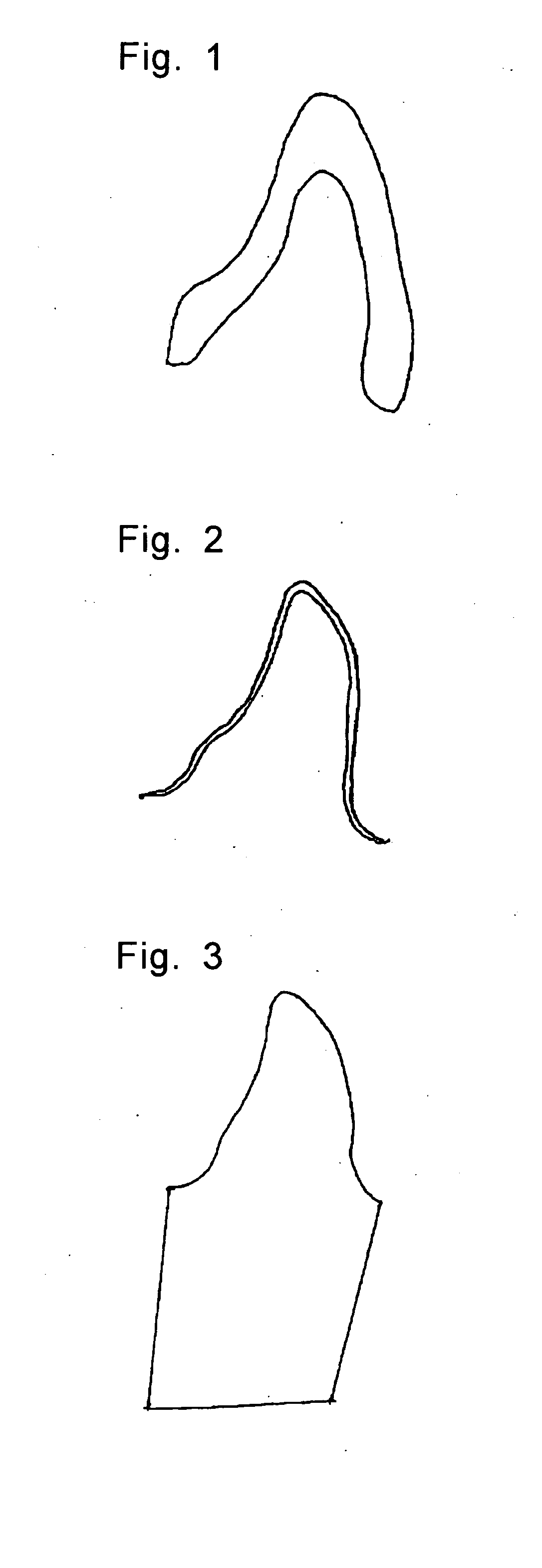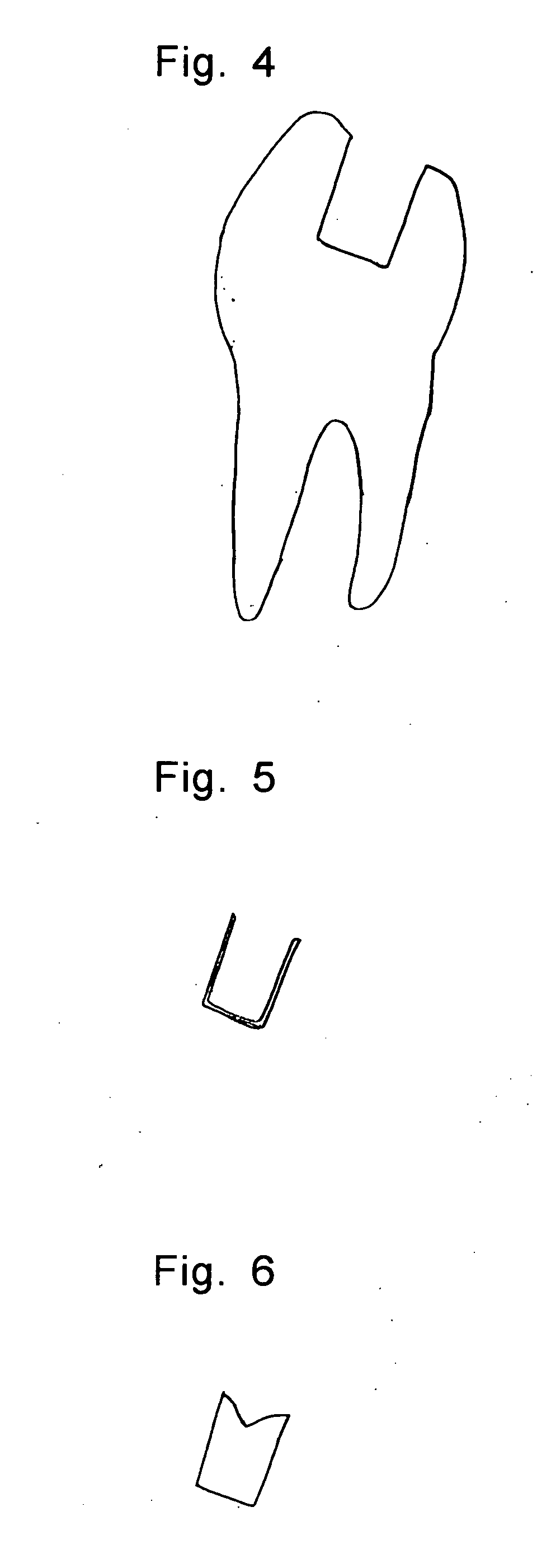Tooth for jaw tooth model and method for producing the same
a tooth and jaw technology, applied in the field of teeth, can solve the problems of difficult to satisfactorily perform applications, inconfusion of students, tooth cutting sensation, etc., and achieve the effects of easy evaluation, easy evaluation, and the same cutting sensation
- Summary
- Abstract
- Description
- Claims
- Application Information
AI Technical Summary
Benefits of technology
Problems solved by technology
Method used
Image
Examples
examples
When Using Aluminosilicate Tooth
(Casting)
[0129]In a pot mill, 100 g of an aluminosilicate powder (Al2O3: 19%, SiO2: 74%, average particle diameter: 0.15 μm) as a ceramic raw material for a liquid raw material and water as a solvent were mixed, ground and dispersed to prepare a slurry. The resulting slurry was previously cast in a negative gypsum mold having a tooth form and then baked at 1,300° C. to obtain tooth-shaped aluminosilicate semi-sintered bodies.
[0130]Characteristics of the resulting tooth-shaped aluminosilicate semi-sintered bodies are shown in Table 2 as Examples Nos. 1 to 4.
PUM
 Login to View More
Login to View More Abstract
Description
Claims
Application Information
 Login to View More
Login to View More - R&D
- Intellectual Property
- Life Sciences
- Materials
- Tech Scout
- Unparalleled Data Quality
- Higher Quality Content
- 60% Fewer Hallucinations
Browse by: Latest US Patents, China's latest patents, Technical Efficacy Thesaurus, Application Domain, Technology Topic, Popular Technical Reports.
© 2025 PatSnap. All rights reserved.Legal|Privacy policy|Modern Slavery Act Transparency Statement|Sitemap|About US| Contact US: help@patsnap.com



